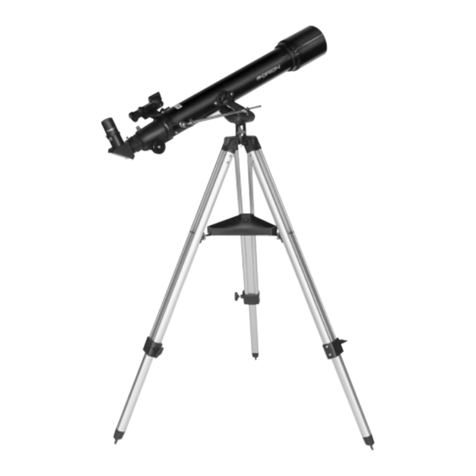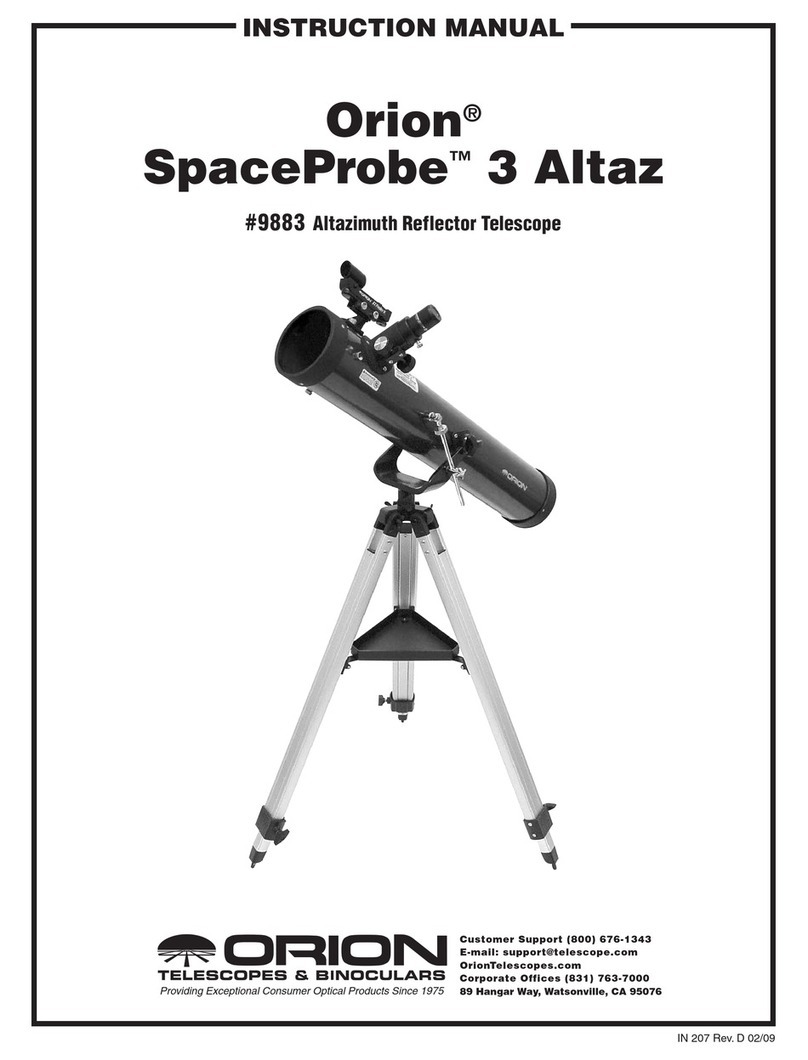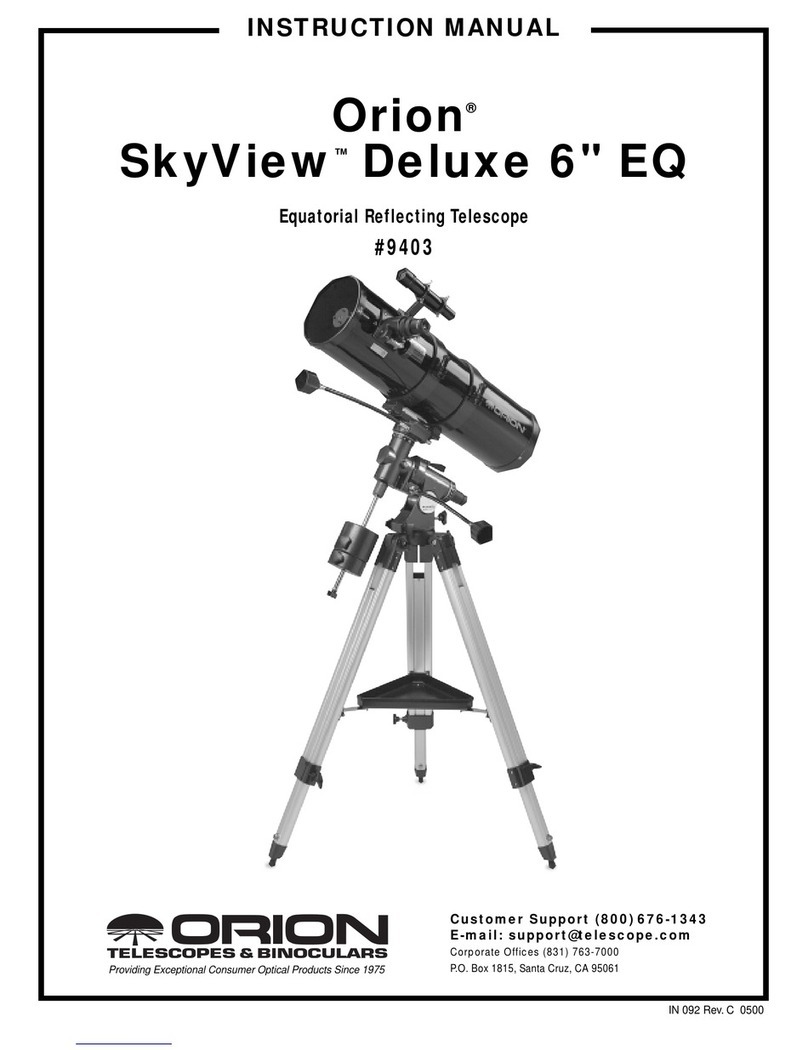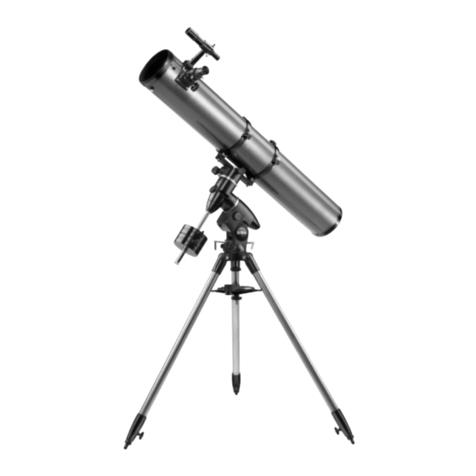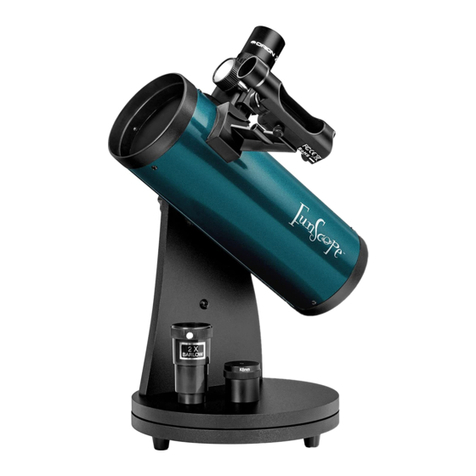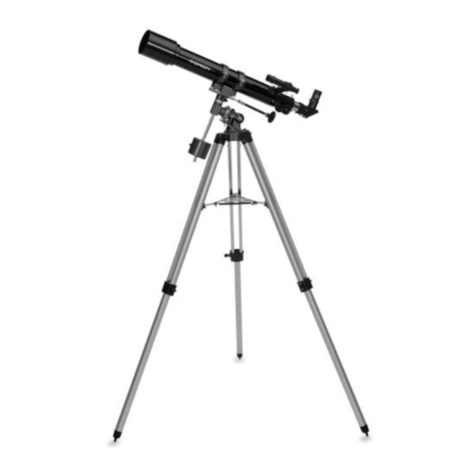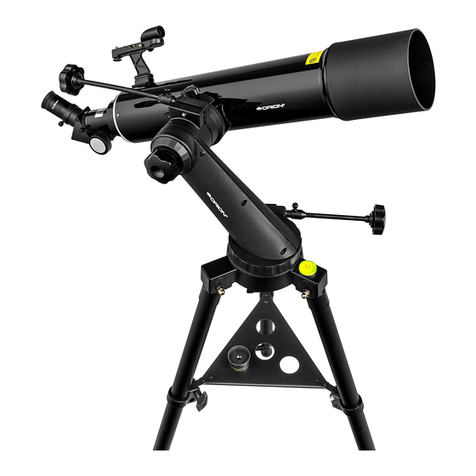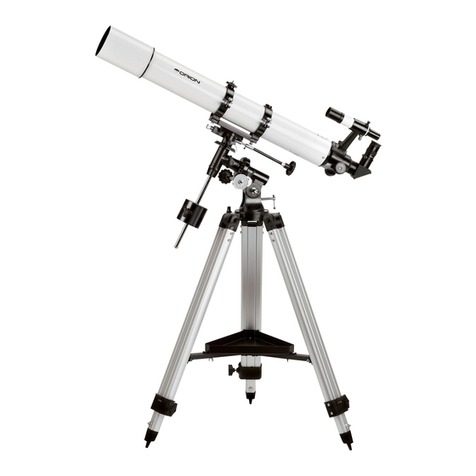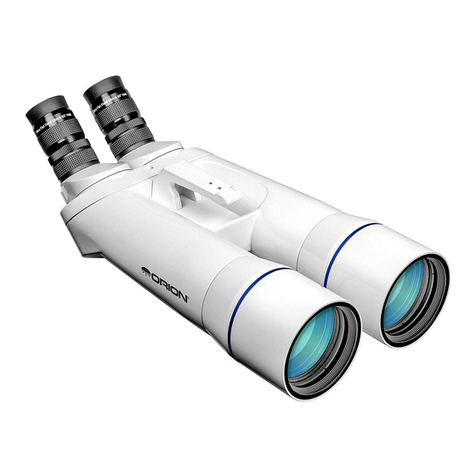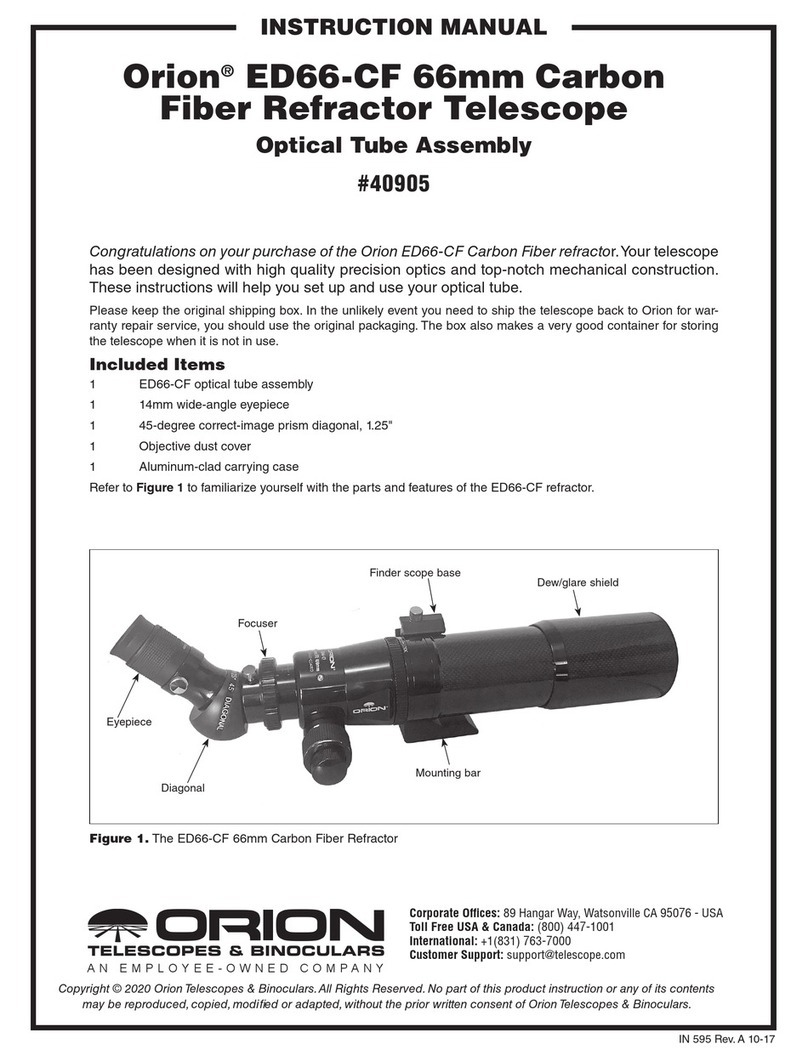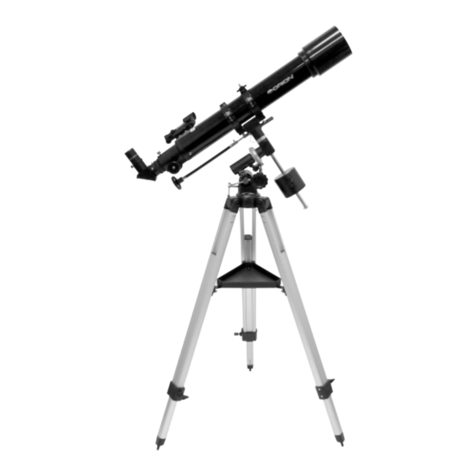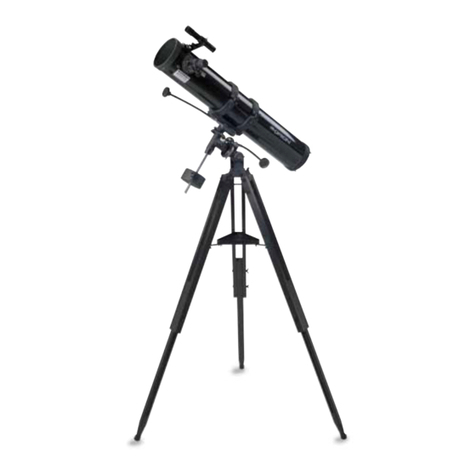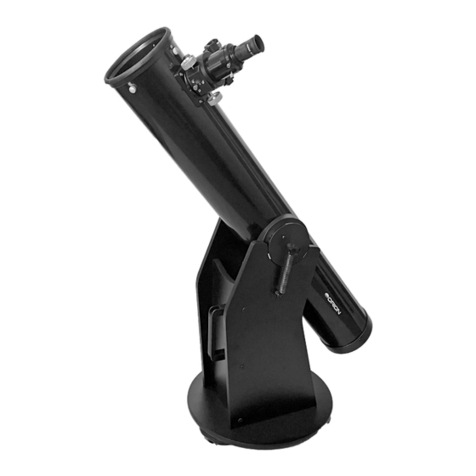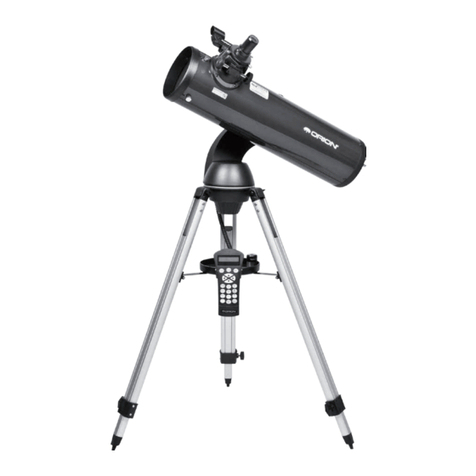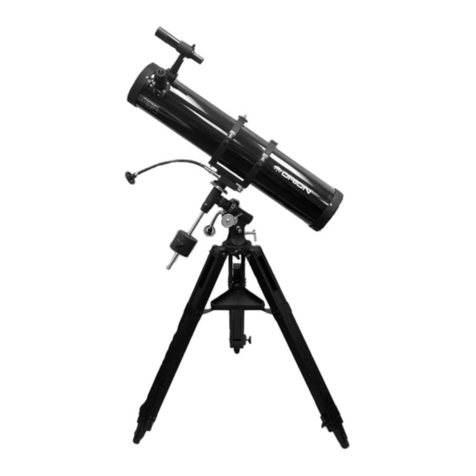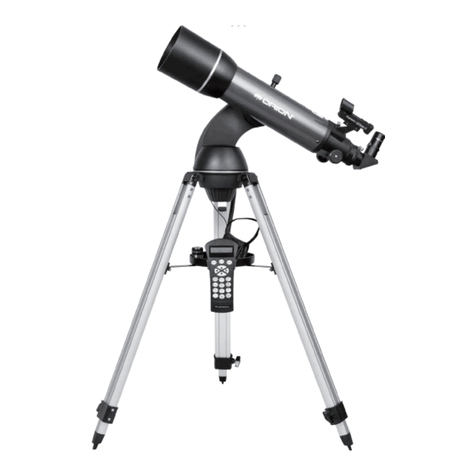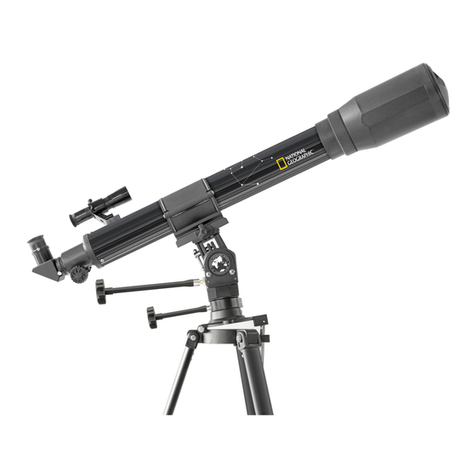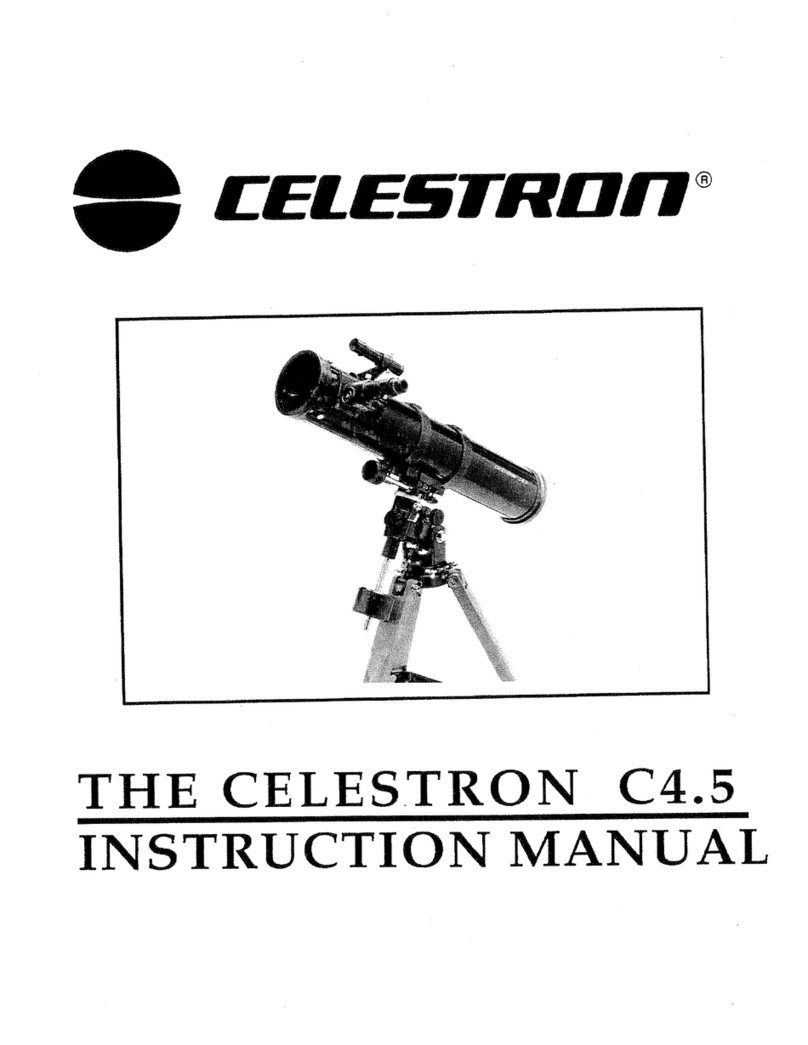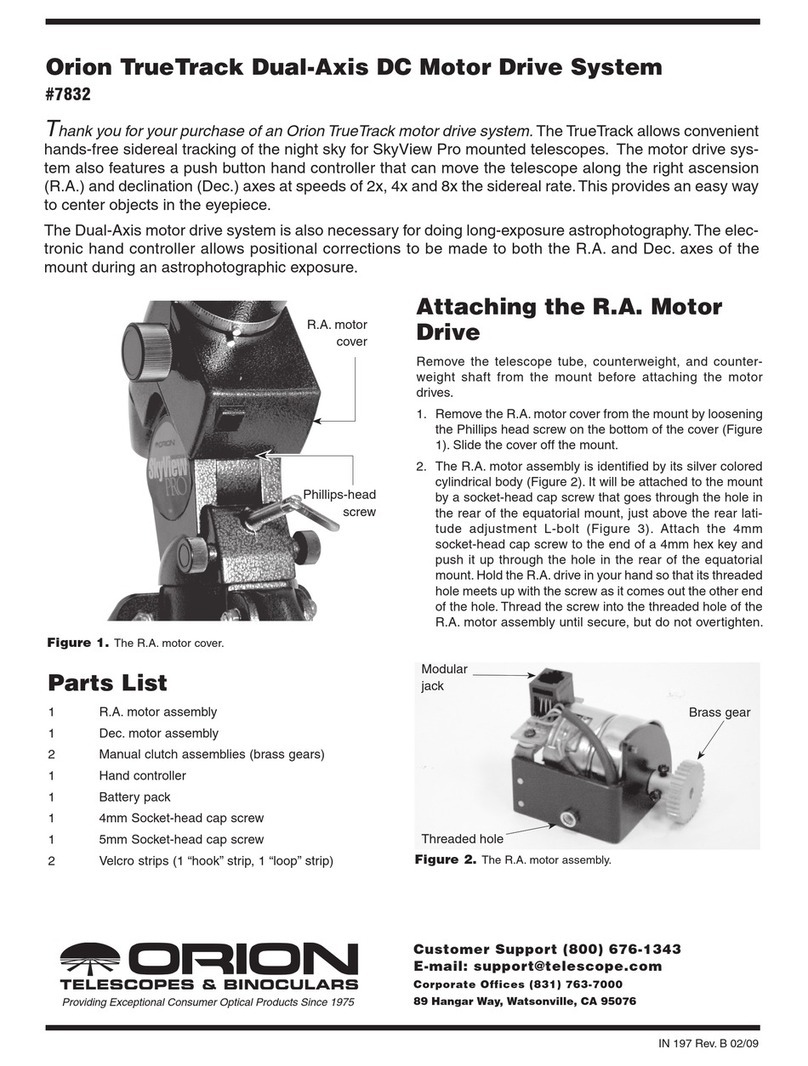
9
Jupiter, and Saturn are the brightest objects in the sky after
the Sun and the Moon. Other planets may be visible but will
likely appear star-like. Because planets are quite small in
apparent size, optional higher-power eyepieces or a Barlow
lens are recommended and often needed for detailed obser-
vations.
B. The Sun
You can change your nighttime telescope into a daytime Sun
viewer by installing an optional full-aperture solar lter over
the front opening of the telescope. The primary attraction is
sunspots, which change shape, appearance, and location
daily. Sunspots are directly related to magnetic activity in the
Sun. Many observers like to make drawings of sunspots to
monitor how the Sun is changing from day to day.
Important Note: Do not look at the Sun with any optical
instrument without a professionally made solar lter, or per-
manent eye damage could result.
D. The Stars
Stars will appear like twinkling points of light. Even powerful
telescopes cannot magnify stars to appear as more than a
point of light. You can, however, enjoy the different colors of
the stars and locate many pretty double and multiple stars.
The famous “Double-Double” in the constellation Lyra and the
gorgeous two-color double star Albireo in Cygnus are favor-
ites. Defocusing a star slightly can help bring out its color.
E. Deep-Sky Objects
Under dark skies, you can observe a wealth of fascinating
deep-sky objects, including gaseous nebulas, open and
globular star clusters, and different types of galaxies. Most
deep-sky objects are very faint, so it is important you nd an
observing site well away from light pollution.
To nd deep-sky objects with your telescope, you rst need
to become reasonably familiar with the night sky. Unless you
know how to recognize the constellation Orion, for instance,
you won’t have much luck locating the Orion Nebula. A simple
planisphere, or star wheel, can be a valuable tool for learning
the constellations and seeing which ones are visible in the
sky on a given night. Once you have identied a few constel-
lations, a good star chart, atlas, or astronomy app will come in
handy for helping locate interesting deep-sky objects to view
within the constellations.
Do not expect these objects to appear like the photographs
you see in books and on the internet; most will look like dim
gray smudges. Our eyes are not sensitive enough to see color
in deep-sky objects except in a few of the brightest ones. But
as you become more experienced and your observing skills
get sharper, you will be able to ferret out more and more sub-
tle details and structure.
5. Worthwhile Optional
Accessories
• Moon Filter – A 1.25" Moon lter will cut down the strong
glare of sunlight reected from the Moon, making Moon
viewing more comfortable and revealing more surface
detail. The lter threads into the bottom of the Kellner
eyepieces that came with your telescope (Figure 13).
• Barlow Lens – A 2x Barlow lens doubles the magnify-
ing power of any eyepiece it’s used with, giving you a big
power boost to get in closer to your target object. You just
insert it between the diagonal and the eyepiece.
• Correct-Image Diagonal – Also called an “erect-image”
diagonal, this accessory will provide a correctly oriented
view through the telescope, which is recommended for
daytime terrestrial viewing.
• Planisphere – A nifty “star wheel” that shows what stars
and constellations are visible in the sky at any time of any
night. Just set the date and time see a mini representation
of your local night sky. Great for identifying what you see
and planning an evening’s observing session.
• Star Map – More detailed than a planisphere, a star
map is essential for locating interesting celestial objects
to observe with your telescope. Nowadays many mobile
astronomy apps feature customizable star maps that you
can access on your smartphone or tablet while you’re at
the telescope.
6. Telescope Care and
Maintenance
If you give your telescope reasonable care, it will last a lifetime.
Store it in a clean, dry, dust-free place, safe from rapid changes
in temperature and humidity. Do not store the telescope out-
doors, although storage in a garage or shed is OK. Small compo-
nents like eyepieces and other accessories should be kept in a
protective box or storage case. Keep the dust cover on the front
of the telescope when it is not in use.
Your refractor telescope requires very little mechanical mainte-
nance. The optical tube has a smooth painted nish that is fairly
scratch-resistant. If a scratch does appear on the tube, it will not
harm the telescope. If you wish, you may apply some auto touch-
up paint to the scratch. Smudges on the tube can be wiped off
with a soft cloth and household cleaning uid.
Cleaning Optics
Any quality optical lens cleaning tissue and optical lens cleaning
uid specically designed for multi-coated optics can be used
to clean the lenses of your telescope and eyepieces. Never use
regular glass cleaner or cleaning uid designed for eyeglasses.
Before cleaning, remove any loose particles or dust from the lens
with a blower bulb or soft brush. Then apply some cleaning uid
to a tissue, never directly on the optics. Wipe the lens gently in
a circular motion, then remove any excess uid with a fresh lens
tissue. Oily ngerprints and smudges may be removed using this
method. Use caution; rubbing too hard may scratch the lens. On
larger lenses, clean only a small area at a time, using a fresh
lens tissue on each area. Never reuse tissues.
